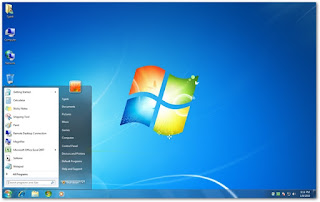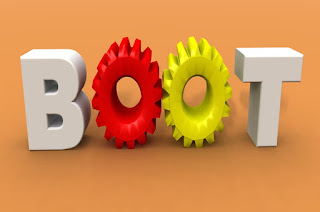In this Post we will Learn How PC boots and what are Sequence of Steps(process) that boots up your PC.
Before the computer displays you the interactive graphical interface so you can use your machine to perform your work, it goes through a sequence of processes to get here. Passing through these steps to start the PC is called Booting the PC.
Why you should care about how the PC starts?
It might help you troubleshoot your PC which does not display anything when you power it up. Or you might just be interested in the steps for your knowledge. Anyhow, the machine “PC” deserves to be understood.
The boot-process is handled by the BIOS (Basic Input Output System). BIOS is a software embedded to the motherboard. Apart from controlling the boot process it also handles the basic configuration of a computer. You can configure your pc through BIOS, for example you can choose which device to boot from e.g. USB, CD-ROM, HDD etc. You might have noticed it when you install Windows or other OS from CD/DVD, where you have to select CD/DVD ROM as your first boot device, if it is not set by default. Beware, don’t change configuration you are not sure of. Well, I did once, overclocked the CPU and the PC did not display anything after that. Now coming back to the topic.
Following are the steps in booting process:
Have a Problem with Pc Booting? Feel Free To Ask by Leaving a comment!
Before the computer displays you the interactive graphical interface so you can use your machine to perform your work, it goes through a sequence of processes to get here. Passing through these steps to start the PC is called Booting the PC.
Why you should care about how the PC starts?
It might help you troubleshoot your PC which does not display anything when you power it up. Or you might just be interested in the steps for your knowledge. Anyhow, the machine “PC” deserves to be understood.
The boot-process is handled by the BIOS (Basic Input Output System). BIOS is a software embedded to the motherboard. Apart from controlling the boot process it also handles the basic configuration of a computer. You can configure your pc through BIOS, for example you can choose which device to boot from e.g. USB, CD-ROM, HDD etc. You might have noticed it when you install Windows or other OS from CD/DVD, where you have to select CD/DVD ROM as your first boot device, if it is not set by default. Beware, don’t change configuration you are not sure of. Well, I did once, overclocked the CPU and the PC did not display anything after that. Now coming back to the topic.
Following are the steps in booting process:
- The power button sends signal to the power supply to provide power to the mainboard and other hardware components.
- After powering up, the first step is to perform POST (Power-on Self-Test). It’s part of the BIOS that checks the hardware components. Depending on the results, it gives single beep, if everything is OK. Three beeps if RAM is not working/not plugged. So it greatly helps to troubleshoot the PC which does not display anything.
- PC shows some basic information, such as the vendor’s LOGO etc.
- BIOS tries to read the first sector of the drive which is configured as a first device to boot from.
- The BIOS loads the BOOT LOADER into the memory (RAM). Boot loader is also a special software which locates the OS in your drive and launch it.
- Now all the work is handed over to the boot loader which has started to load the OS into the memory.
- After completion of its work, the task of managing the PC and its resources is handed over to your OS.
Have a Problem with Pc Booting? Feel Free To Ask by Leaving a comment!





Your blog is looking good and contains very good collection of PC.
ReplyDeleteThank you. Keep visiting.
ReplyDelete